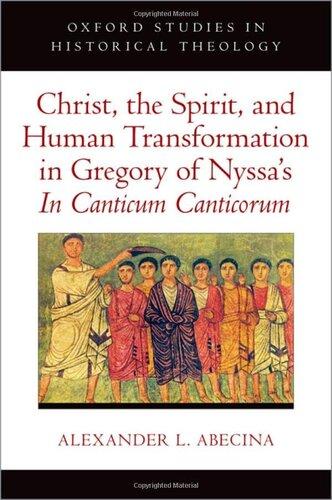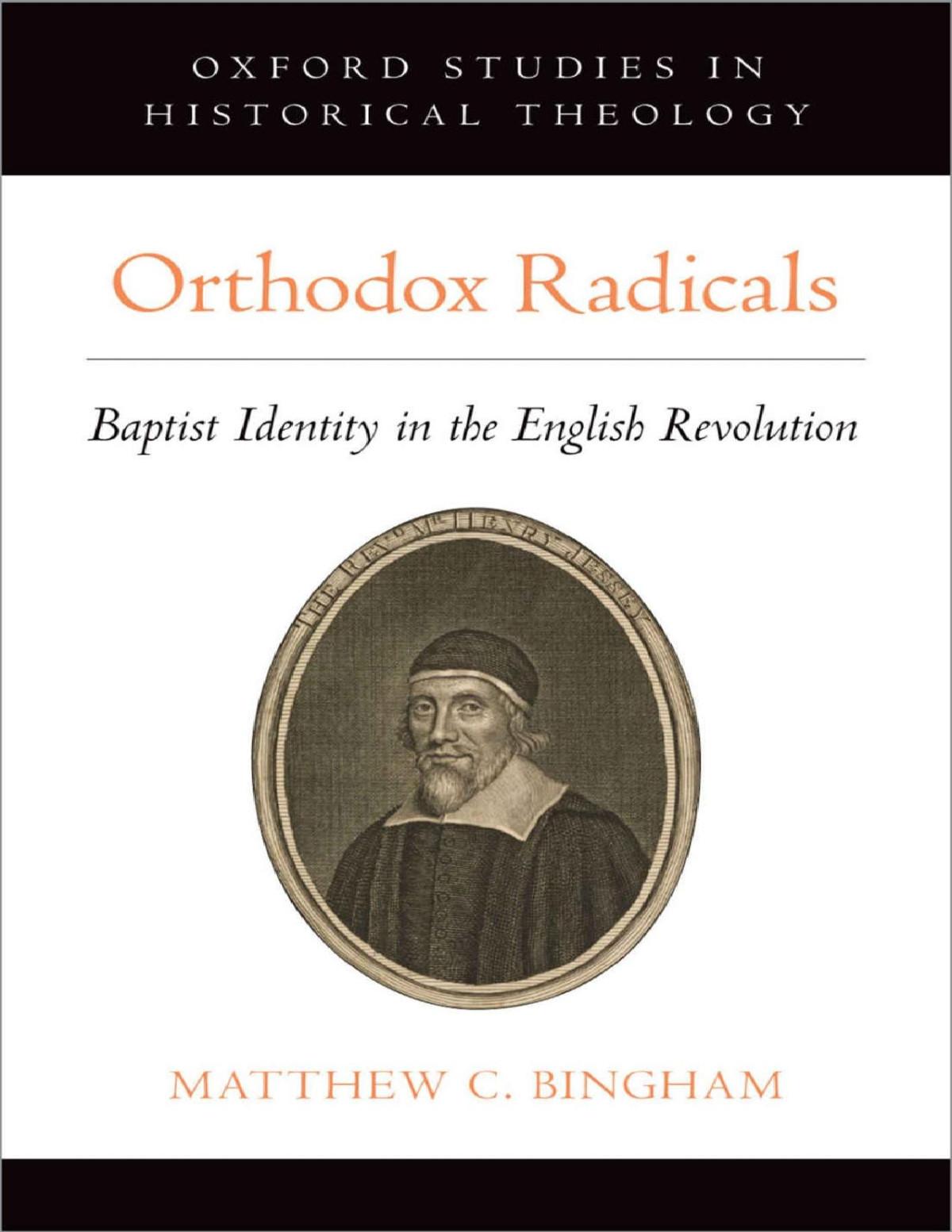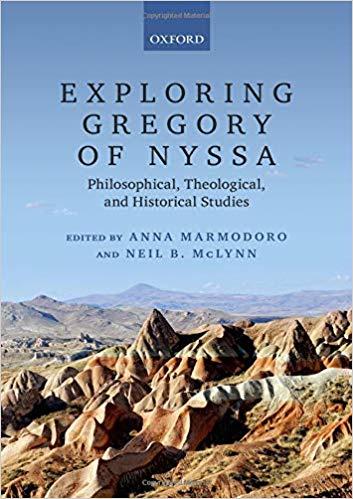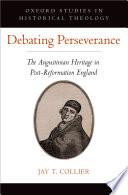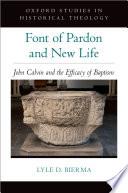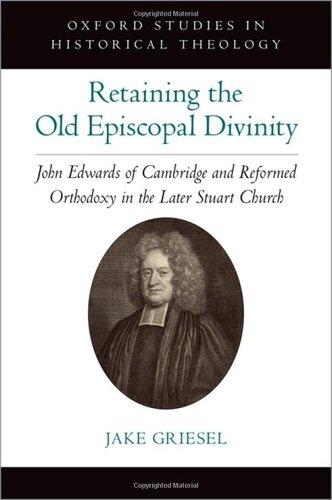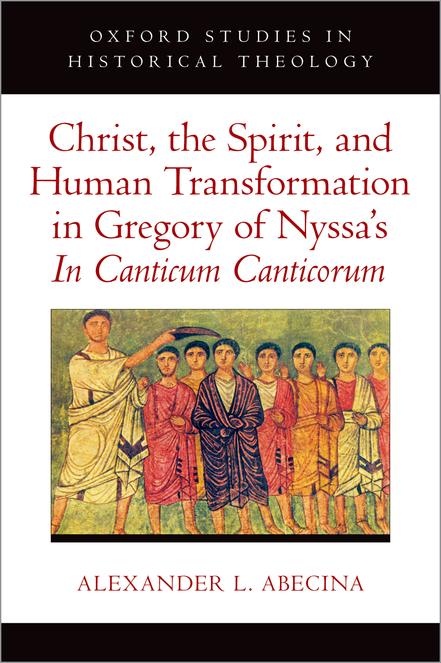Acknowledgements
This book is the product of my doctoral research conducted at Peterhouse, University of Cambridge, between 2017 and 2020, generously funded by the Peterhouse Graduate Studentship and the Faculty of Divinity Crosse Studentship. My express gratitude goes to Steven Connor and Peter Harland for their assistance in securing extensions for both of these studentships in response to the interruption caused by the Coronavirus pandemic. I am also thankful to the Institute for Religion and Culture, Canada, for providing additional financial aid.
Many have made invaluable contributions at key stages along the way. Due credit must be given to my first-year doctoral examiners, Sarah Coakley and James Carleton Paget, who offered expert guidance in my project’s early phase. I am indebted to my doctoral supervisor, Professor Thomas Graumann, who was instrumental in fine-tuning my research focus and without whose advice my thesis would not have reached completion. The Faculty of Divinity librarians, Clemens Gresser and Matthew Patmore, consistently went above and beyond the call of duty in locating and purchasing essential research materials. In 2018, I attended the 14th International Colloquium on Gregory of Nyssa, held at Les Collège des Bernardins, Paris, where I discussed my project with several experts, notably Giulio Maspero, Miguel Brugarolas, and Andrew Radde-Gallwitz. Opportunities to discuss aspects of my research with Michael Champion and Mark Edwards took place during the 18th International Conference on Patristic Studies, held at Oxford in 2019. The expenses for travel, accommodation, and registration for both conferences were generously covered by Peterhouse and Faculty of Divinity bursaries. My fellow doctoral student Austin Stevenson readily offered judicious observations on several draft chapters. Finally, I am grateful to my thesis examiners, Morwenna Ludlow and Mark Smith, who provided exacting feedback on all aspects of my research in their examiner’s reports. It has been a pleasure working with the editorial team of the Oxford Studies in Historical Theology series. I wish to express my thanks to Richard Muller for his endorsement of the work, and the two anonymous reviewers for their careful, detailed engagements. Likewise, I am greatly appreciative of
the work of Tom Perridge, Rada Radojicic, and the editorial team at Oxford University Press for ensuring that the path to publication of this book was as smooth as possible.
Some sections of this book have been previously published elsewhere in articles. In chronological order, Chapter 4 was published in Modern Theology, 35/4 (2019), and Chapter 5 in the Journal of Theological Studies, 75/1 (2020); a significant portion of Chapter 1 was published in Studia Patristica, 115 (2021); and portions of Chapters 2 and 8 were published in the International Journal of Systematic Theology, 24/4 (2022). My thanks go to Oxford University Press, Peeters Publishers, and Wiley for granting permissions to reprint this material.
A number of friends are deserving of special mention for the joyful camaraderie during the period of my doctoral research. Firstly, my friends from Peterhouse MCR: Matthew Pawlak, Kan Gunawardena, Francisco Garita, Tom Langley, Jake Griesel, Eloise Davies, Daniel McKay, Jenny Ward, Tobias Cremer, Niahm Colbrook, Alex Tsompanidis, Adam Behan, Antoine Koen, Carolina Orozco, Peter Faul, Sam Woodman, Will Kaufhold, Theresa Jakuszeit, Fred Maeng, Alicia Mavor, Harry Spillane, Ephraim Levinson, William Simpson, James Thorne, Vincent Williams, Catherine Richards, Joanna Usher, and Matilda Gillis. Secondly, my friends and collaborators from the Cambridge Faculty of Divinity: Austin Stevenson, Roger Revell, Hannah Black, Ryan Gilfeather, Jessica Scott, Pui Ip, Isidoros Katsos, Jesse Grenz, Jonathan Platter, and Matthew Fell. Lastly, this book would not have been possible without the love and support of my family, especially Felix, Miguel, Theodor, Ana, and Jennifer.
Abbreviations
I. Gregory of Nyssa
anim. et res. de anima et resurrectione [GNO III/3]
Apoll. antirrheticus adversus Apolinarium [GNO III/1, 131–233]
(English trans. = Orton)
ascens. in ascensionem Christi oratio [GNO IX, 323–327]
bapt. Chr. in baptismum Christi, in diem luminem [GNO IX, 221–242]
(English trans. = NPNF II/5)
bapt. diff. adversus eos qui baptismum differunt [GNO X/2, 355–370]
beat. 1-8 de beatitudinibus [GNO VII/2, 75–170]
(English trans. = Graef)
ep. 1–25 epistulae [GNO VIII/2]
(English trans. = Silvas)
Eun. I contra Eunomium I [GNO I, 22–225]
(English trans. = Hall I)
Eun. II contra Eunomium II [GNO I, 226–409]
(English trans. = Hall II)
Eun. III contra Eunomium III [GNO II, 3–311]
(English trans. = Hall III)
fid. ad Simplicium, de fide [GNO III/1, 61–67]
(English trans. = NPNF II/5)
hom. in 1 Cor. 15:28 homilia in illud: Quando sibi subjecerit; Tunc et ipse: in illud filius [GNO III/2, 1–28]
(English trans. = Greer)
hom. in Cant. in Canticum Canticorum [GNO VI, 3–469]
(English trans. = Norris II)
Maced. adversus Macedonianos [GNO III/1, 89–115]
(English trans. = Radde-Gallwitz)
or. catech. oratio catechetica magna [GNO III/4]
(English trans. = Green)
or. dom. de oratione dominica [GNO VII/2]
xii Abbreviations
(English trans. = Graef)
perf. de perfectione [GNO VIII/1, 173–214]
(English trans. = Woods Callahan II; Greer)
Pss. titt. in inscriptiones Psalmorum [GNO V, 24–175]
(English trans. = Heine)
ref. Eun. Refutatio Confessionis Eunomii
Steph. 1 in sanctum Stephanum I [GNO X/1, 75–94]
Trin. ad Eustathium, de sancta trinitate [GNO III/1, 3–16]
(English trans.= Silvas)
v. Mos. vita Moysis [GNO VII/1]
(English trans. = Malherbe and Ferguson)
virg. de virginitate [GNO VIII/1, 247–343]
(English trans. = Woods Callahan)
II. Other
Ar. 2 Athanasius, orationes tres adversus Arianos (English trans. = NPNF II/4)
BDGN Brill Dictionary of Gregory of Nyssa
Cant. Origen, Commentarium in Cant
(English trans. = Lawson)
corp. et div. Apolinarius of Laodicea, de unione corporis et divinitatis in Christo [Lietzmann]
(English trans.= Norris I)
d.e. Eusebius of Caesarea, demonstratio evangelica
ep. 1–366 Basil of Caesarea, epistulae [PG 32]
Eun. 1–3 Basil of Caesarea, adversus Eunomium libri tres
(English trans. = DelCogliano and Radde-Gallwitz)
fr. 1–115 Marcellus of Ancyra, fragmenta [Vinzent]
fr. 1–171 Apolinarius of Laodicea, fragmenta [Lietzmann]
(English trans. = Norris I)
GNO Gregorii Nysseni Opera
haer. Epiphanius of Salamis, panarion seu adversus lxxx haereses
(English trans.= Williams)
inc. et c. Ar. pseudo-Athanasius, de incarnatione et contra Arianos [PG 26]
(English trans. = Deferrari) insomn. Synesius of Cyrene, de insomniis
(English trans. = Russell)
loc. aff. Galen, de locis affectis
(English trans. = Siegel)
NPNF Nicene and Post-Nicene Fathers
II/4 = Athanasius
II/5 = Gregory Nyssa
PG Patrologia Graeca
Spir. Basil of Caesarea, liber de Spiritu sancto
Abbreviations
Introduction
Between the early 370s and 390s, Gregory of Nyssa (c. 335–c. 394) served as a leading figure amidst the most pressing theological disputes of his time. In his capacity as bishop he produced a series of polemical treatises and personal correspondences defending what he held to be the orthodox account of trinitarian and christological doctrine. Within this same role, in a manner no less detached from theological controversy, Gregory acted as spiritual guide over his church. His body of works therefore includes a sizeable collection of homilies that expound upon scriptural teaching on both sound doctrine and the ethical life of virtue in which the church was to be formed. A common thread that unites the aims of both Gregory’s technical, polemical works and his homiletical, spiritual writings during this entire period is his underlying interest in soteriology that is, Gregory’s basic concern rightly to articulate the conditions, theological and anthropological, under which finite and fallen humanity may be transformed, restored to its original state, and so united with God. One of the main tasks of the present work is to define, through a close analysis of several of Gregory’s major writings, the main contours of this soteriological account of human transformation and union with God.
On the one hand, Gregory’s account of human transformation and union with God has what we might call an objective aspect. This is the dimension of human salvation that, according to Gregory, is grounded in the divine initiative and activity, and can be considered independently of the ‘first person’ subjective experience of it. Gregory’s polemical writings against the Macedonians, Eunomians, and Apollinarians, for instance, take for granted the possibility of articulating and defending objective grounds for human salvation in the economy with little to no reference to one’s subjective experience of this reality. However, many of Gregory’s more eirenic works, his homilies especially, reflect extensively upon a corresponding subjective experience of this same reality, encompassing the full ambit of the embodied, noetic, voluntary, and affective dimensions of human existence. How, then,
did Gregory understand the relationship between these two aspects—the objective and the subjective—of his account of human transformation and union with God; and, in particular, how does his understanding manifest itself across his doctrinal and homiletical writings? This is the question upon which I focus, culminating in an analysis of what is most probably Gregory’s final written work, hom. in Cant. In turn, this question generates a number of other related queries that will be addressed along the way: To what degree is there coherence between the way Gregory relates the objective and subjective aspects? Are they logically or even ‘systematically’ related in a manner that crosses literary genres?
To this end, the present work is divided into two parts. In Part I (Chapters 1–5), I focus on a selection of Gregory’s works written prior to hom. in Cant. By attending to the often-neglected role of pneumatology in these works, I argue that he held a largely coherent doctrinal account of the objective reality of human transformation and union with God grounded in:
i. the unified activity of the Father, Son, and Holy Spirit; and ii. the incarnation of Christ, expressed in terms of what I call a Spiritbased christology.
In Part II (Chapters 6–8), I argue that Gregory wrote hom. in Cant. to guide his readers through a subjective process of interpreting the Song of Songs by which the objective reality of human transformation and union with God of which Gregory speaks throughout his corpus is experienced as a subjective reality within the depth of the whole person—heart, mind, body, and soul. I shall argue that, for Gregory, this subjective process of embodied, noetic, and affective transformation is itself grounded in both points (i) and (ii) and, in this way, completes and renders coherent his account of the objective reality of human transformation and union with God articulated in earlier works.
Chronology of Works
Gregory’s works will be analysed in roughly chronological order, as best as this order can be determined. The approach is chosen not in order to chart the course of Gregory’s ‘development of thought’ (more on this below), but rather because Gregory’s literary-theological aims are conditioned by specific historical, polemical, and ecclesial contexts; and the natural sequence
in which these contexts are arranged is chronologically. Furthermore, the chronological approach offers an orderly account of Gregory’s thought prior to his exposition of the Song of Songs and can thus confidently be taken as a basis for Gregory’s exegesis in hom. in Cant
It is uncontroversial to begin this book, then, with an analysis of virg. as it is considered by a majority of scholars either to be early or Gregory’s earliest.1 In the introduction to this treatise, Gregory indicates that Basil, ‘our most reverend bishop and father’ is still alive,2 so virg. must have been written after 370, the date of Basil’s consecration as bishop, and prior to his death on 1 January, 379. This fact alone places virg. earlier than all other works considered in this book. Aubineau and Daniélou are of the view that the treatise was composed before Gregory became bishop, and hence they assign it a date of 371.3 Cadenhead suggests that, owing to its prominent rhetorical features, virg. should be dated between 370 and 372, a period when Gregory was a practicing rhetorician.4 However, Staats argues that, due to its apparent references to ‘Messalians’, virg. should be dated sometime between 375 and 378,5 a period that falls within what Columba Stewart has called the first phase of the emergence of Messalianism.6
Staats’ observation has merit, however it need not preclude an earlier dating. The link between virg. and Messalianism can be traced to Basil of Caesarea’s longstanding friendship with Eustathius of Sebaste, who, at the Council of Gangra (c. 340), together with ‘Eustathian’ ascetics, was condemned for holding extreme views on marriage, fasting, and other church practices.7 However, in 372 tensions began to rise between Basil and Eustathius’ disciples; and by 375, after ongoing conflicts, Basil and Eustathius would come to sever their ties over a disagreement regarding the doctrine of the Holy Spirit. Between 373 and 375 Basil penned the ‘eirenic’ yet clearly
1 Cf. Morwenna Ludlow, Gregory of Nyssa: Ancient and [Post]modern (Oxford: Oxford University Press, 2007), 184 n.6; Raphael A. Cadenhead, The Body and Desire: Gregory of Nyssa’s Ascetical Theology (Oakland: University of California Press, 2018), 171.
2 Virginia Woods Callahan, Saint Gregory of Nyssa: Ascetical Works, The Fathers of the Church 58 (Washington, DC: Catholic University of America Press, 1967), 7.
3 Michel Aubineau, Traité de la Virginité: Introduction, texte critique, traduction, commentaire et index, Sources Chretiennes 119 (Paris: Les Éditions du Cerf, 1966), 31; Jean Daniélou, ‘La chronologie des oeuvres de Grégoire de Nyssa’, in Studia Patristica 7, ed. F. L. Cross (Leuven: Peeters, 1966), 160.
4 Cadenhead, Body and Desire, 171.
5 R, Staats, ‘Basilius als lebende Mönchsregel in Gregor von Nyssa De Virginitate’, Vigiliae Christianae, 39 (1985), 228–255.
6 Columba Stewart, ‘Working the Earth of the Heart’: The Messalian Controversy in History, Texts, and Language to AD 431 (Oxford: Clarendon Press, 1991), 14–23.
7 John Meyendorff, The Byzantine Legacy in the Orthodox Church (New York: St. Vladimir’s Press, 1982), 200–201.
anti-Eustathian work On the Holy Spirit, while, at the Council of Cyzicus of 376, Eustathius declared himself leader of the Pneumatomachian party.8
As Jason Scarborough notes, ‘Basil’s long association with Eustathios of Sebaste [sic] (and by association Messalianism) present themselves as the most pressing, and most obvious of Gregory’s concerns [when writing virg.]’.9 Moreover, ‘the close connection between the earlier views of Basil and the Eustathians clearly informed the writing of the treatise [i.e. virg.]’.10 From this vantage point, Gregory’s emphasis in virg. on the Holy Spirit, demonic influence, and the necessity of baptism for the ascetical life of virginity (which I shall discuss in Chapter 1) probably reflects points of conflict that would have arisen among Basil, Eustathius, and their respective followers in the early to mid-370s. That Gregory composed a pro-Nicene treatise, critical of Eustathian proclivities for Messalianism, yet without the overt antiPneumatomachian polemics characteristic of the late 370s, fits the period between 373 and 375.
On a similar note, it is also uncontroversial that this book concludes with an analysis of hom. in Cant., given that it is widely regarded as either late or the very last of Gregory’s works. Some care needs to be taken with the dating as it is apparent that there are two stages of composition. In the first instance, there can be no doubt that the essential content of the homilies that comprise hom. in Cant. were actually preached by Gregory in person to his church in Nyssa, likely as part of a Lenten sermon series.11 Only later did Gregory have a hand in editing the original content and determining the final form by consulting the ‘notes’ that were taken during his live preaching. The precise timeframe that elapsed between preaching and written composition is uncertain, though Norris offers a convincing case that it must have been relatively short.12 In any event, it is a moot issue given that my interests in hom. in Cant. lie solely in its final form. As others have noted, hom. in Cant. was likely composed after v. Mos. since the former elaborates on ideas about Moses found
8 Michael A. G. Haykin, The Spirit of God: The Exegesis of 1 and 2 Corinthians in the Pneumatomachian Controversy of the Fourth Century (Leiden: Brill, 1994), 9–49.
9 Jason M. Scarborough, ‘Asceticism as Ideology: Gregory of Nyssa’s De virginitate’, Union Seminary Quarterly Review 57 (2003), 131–150.
10 Scarborough, ‘Asceticism as Ideology’, 144.
11 J. Warren Smith, Passion and Paradise: Human and Divine Emotion in the Thought of Gregory of Nyssa (New York: Herder and Herder, 2004), 218.
12 Richard A. Norris Jr., Gregory of Nyssa: Homilies on the Song of Songs, Writings from the GrecoRoman World 13 (Atlanta: SBL, 2012), xxii: ‘Gregory himself suggests that he had little time to work on revisions “during the days of fasting” (which, I am inclined to suspect, means that is original delivery of the sermons and his revisions were undertaken during the same—busy—Lenten season)’.
in the latter.13 Regarding the dating of v. Mos., Heine suggests that, because it deals with themes relevant to the Eunomian controversy, it should be dated between 380 and 384.14
There are reasons to believe, however, that hom. in Cant. was not written until well after this period, probably in the year 391. We know that Gregory’s composition of hom. in Cant. was motivated by a request from Olympias, a woman of noble descent, with whom Gregory was already acquainted.15 It is likely that Gregory did not receive this request from Olympias until after she was widowed at a young age in 386, and probably not until 391, when Emperor Theodosius I reneged on an earlier decision to temporarily confiscate Olympias’ property and forbid her from associating with prominent church leaders.16 With these considerations in mind, we can surmise that the homilies that form the basis for hom. in Cant. were probably preached sometime around 391, while hom. in Cant. itself was composed shortly thereafter. If Gregory died, as is believed, in the year 395, then hom. in Cant. could conceivably have been composed any time between 391 and the year of his death.17 Whatever the precise date, the evidence suggests that it is significantly later than any of Gregory’s other works considered in this book.
In Chapter 2, I cover several works in which baptismal theology is prominent. The first three works analysed—ep. 5, ep. 24, and Maced. are clearly to be grouped together, and probably in this chronological order. We find in ep. 5 a reference to Gregory’s involvement in reconciling to the church ‘those who came from the assembly of Marcellus [of Ancyra]’ in response to instructions given to him by ‘orthodox and fellow ministers in the East’.18 Silvas is probably correct to trace these instructions to the Council of Antioch of 379, and so ep. 5 was likely to have been written shortly thereafter. Regarding ep. 24 and Maced., several have noted there are clear parallels between the two works, but Radde-Gallwitz provides a compelling case that
13 Cadenhead, Body and Desire, 178.
14 R. E. Heine, Perfection in the Virtuous Life: A Study in the Relationship between Edification and Polemical Theology in Gregory of Nyssa’s De Vita Moysis (Cambridge, MA: Philadelphia Patristic Foundation, 1975), 15.
15 Norris, Gregory of Nyssa: Homilies on the Song of Songs, xx–xxi; Anne-Marie Malingrey, Jean Chrysostome, Lettres à Olympias, 2nd ed., augmentée de la Vie Anonyme D’Olympias: Introduction, Texte Critique, Traduction et Notes, Sources Chréttiennes 29 (Paris: Éditions du Cerf, 1968), 13–38.
16 Norris, Gregory of Nyssa: Homilies on the Song of Songs, xx.
17 Cf. J. B. Cahill, ‘The Date and Setting of Gregory of Nyssa’s Commentary on the Song of Songs’, Journal of Theological Studies, 32/2 (January 1981), 447–460.
18 Anna M. Silvas, Gregory of Nyssa: The Letters: Introduction, Translation and Commentary, Supplements to Vigiliae Christianae 83 (Brill: Leiden, 2007), 137; Cf. Andrew Radde-Gallwitz, Gregory of Nyssa’s Doctrinal Works: A Literary Study (Oxford: Oxford University Press, 2018), 34.
these are best explained if the latter work is understood to depend on the former. Beginning with the warranted assumption that Maced. ‘has something to do with the Council of Constantinople in 381’, he puts forth the plausible hypothesis that the work was ‘provoked’ by the Macedonian bishops that were in attendance.19 This provides relevant background to Gregory’s reference in Maced. to his opponents’ objection to his ‘confession’ regarding the equal glory and honour of the Holy Spirit alongside the Father and the Son.20 Rather than take this as a reference to Constantinople’s ‘reworked Nicene Creed’, Radde-Gallwitz provides the more convincing case that the ‘confession’ to which his opponents object is the one contained in ep. 24. On this account, Maced. was composed in 381, while ep. 24 was written in the same year or year before.21
The final two works analysed in Chapter 2—bapt. diff. and bapt. Chr. can reliably be dated to the early 380s. According to Daniélou, the Epiphany sermon bapt. diff. is likely to have been delivered around 7 January 381, as may confidently be inferred from Gregory’s reference to a Scythian invasion in the region of Comana Chryse.22 Meanwhile, the sermon bapt. Chr. can reliably be dated to 383. Gregory refers to Christians who abandoned themselves to pagan amusements on the preceding Sunday, 1 January. The years during Gregory’s ministry in which 1 January was a Sunday are therefore 372, 377, 383, and 394. Given that anti-Macedonian arguments feature prominently in this sermon, the most likely year in which it was written is 383.23
The remaining works upon which I focus are Eun. III, Apoll., and hom. in 1 Cor. 15:28. We know that Eun. I was written after Basil’s death (379), as Gregory mentions in ep. 29. There, he writes that after Basil died he ‘inherited the controversy of Eunomius’ and thus penned Eun. I in a mere seventeen days, probably in 380.24 Eun. III must, therefore, have been written after this date, in reaction to a newly disseminated response to Basil from Eunomius. Cadenhead is correct that, given Gregory’s eagerness to defend Basil and refute Eunomius, he would have no reason to delay his response to his opponent’s final tome. Thus, the typical dating of Eun. III to sometime around 383 is highly plausible. Turning now to Apoll., Daniélou claims this
19 Radde-Gallwitz, Doctrinal Works, 63.
20 Radde-Gallwtiz, Doctrinal Works, 63.
21 Radde-Gallwitz, Doctrinal Works, 64–65.
22 Cf. Jean Daniélou, ‘La chronologie des sermons de Grégoire de Nysse’, Revue des Sciences Religieuses, 29/4 (1955), 353–355.
23 Cf. Daniélou, ‘La chronologie des sermons de Grégoire de Nysse’, 362.
24 Silvas, Gregory of Nyssa: The Letters, 207.
work was written between 382 and 383.25 However, May proposes the date of 387 at the earliest, judging it to be later than ad Theophilum, which can be reliably dated to around 385.26 Robin Orton’s argument that Apoll. pre-dates ad Theophilum based on strong resemblances with Eun. III is sufficiently convincing, in my view, to side with Daniélou’s earlier dating.27 Regarding which work is earliest, however, it is likely that Eun. II predates Apoll. given the urgency with which Gregory sought to defend Basil against Eunomius.
Finally, in hom. in 1 Cor. 15:28, Gregory offers his exposition of the contested verse, 1 Cor. 15:28. While Daniélou claimed that Gregory turns his interest to this verse only in the mature stage of his thought,28 and hence assigns it a date of 385, we know that Gregory already showed an interest in refuting the Eunomian interpretation of this verse in the ref. Eun., which he wrote in response to Eunomius’ presentation of a confession of faith at Council of Constantiople in 383. I suggest that Gregory would have been motivated to respond to Eunomius in haste, and so the ref. Eun. should be dated to around 383 also. The hom. in 1 Cor. 15:28 should therefore be understood as a composition motivated by the Eunomian controversy and is plausibly dated to around 383/4.29
Summing up, then, the order in which Gregory’s works are analysed in this book is chronological: virg. (373–375), ep. 5 (379), ep. 24 (380/1), Maced. (381), bapt. diff. (381), bapt. Chr. (383), Eun. III (383), Apoll. (383), hom. in 1 Cor. 15:28 (383/4), hom. in Cant. (c. 391–395). To reiterate, I make no global claims about ‘development’ in Gregory’s thought between the writing of virg. and hom. in Cant, but advance the more modest claim that Gregory’s exegesis of the Song of Songs in his final work hom. in Cant. can be understood to be grounded in several key theological convictions discerned in his earlier works.
25 Jean Daniélou, ‘La chronologie des oeuvres de Grégoire de Nyssa’, 163.
26 Gerhard May, ‘Die Chronologie des Lebens und der Werke des Gregor von Nyssa’, in Écriture et Culture Philosophique dans la Pensée de Grégoire de Nyssa, Actes du Colloque de Chevetogne (22–26 Septembre 1969), ed. Marguerite Harl (Leiden: Brill, 1971), 51–67.
27 Cf. Robin Orton, ‘Struggling with Christology: Apolinarius of Laodicea and St Gregory of Nyssa’, Vox Patrum, 37 (2017), 35–38; Radde-Gallwitz, Doctrinal Works, 194–200.
28 Daniélou, ‘La chronologie des oeuvres de Grégoire de Nyssa’, 167.
29 Cf. J. K. Downing, ‘The Treatise of Gregory of Nyssa: ‘In Illud: Tunc et ipse Filius’. A Critical Text with Prolegomena’ (diss., Harvard University, 1947); Radde-Gallwitz, Doctrinal Works, 179.
Unified Activity of the Trinity
A key concept that features throughout this book is Gregorys’ notion of the unified activity of the Trinity. While the teaching is to be found throughout his works, a particularly clear statement of it is found in De oratione dominica:
‘May Thy Holy Spirit come’, he says, ‘and purify us’ (Luke 11:2, textual variant). The proper power and virtue of the Holy Spirit is precisely to cleanse sin; for what is pure and undefiled requires no cleansing. Now the very same thing the Apostle says about the Only-Begotten, who, making purgation of our sins, sits on the right hand of the majesty of the Father (Heb 1:3). Therefore one is the work of either (ἓν ἑκατέρου τὸ ἔργον), of the Spirit who cleanses from sin as well as of Christ who has made the purgation. But, if the two perform the same activity (ἡ ἐνέργεια μία), then their power must also be exactly the same (ἡ δύναμις πάντως ἡ αὐτή ἐστιν), for every operation is the effect of power (πᾶσα γὰρ ἐνέργεια δυνάμεώς ἐστιν ἀποτέλεσμα). If then there is one activity as well as one power (καὶ ἐνέργεια καὶ δύναμις μία), how can one assume a diversity of nature (ἑτερότητα φύσεως) in those in whom we can find no difference of power and operation (οὐδεμίαν κατὰ τὴν δύναμίν
A proper appreciation of the teaching, and the different uses to which Gregory puts it, requires some understanding of his metaphysical commitments, specifically with regard to the way ‘power’ (δúναμις) is understood within the nature-power-activity triad. The definitive study of Gregory’s understanding of ‘power’ is that of Michel René Barnes. For Gregory, power (δúναμις) is ‘the capacity to act that is distinctive to a specific existent and that manifests the nature of that existent’.31 Thus, argues Gregory, if Father and Son have the same ‘power’ they must have the same ‘nature’.32 While the association of power and nature is commonplace in Gregory’s Hellenistic philosophical milieu, the same cannot be said with regard to the connection Gregory draws between God’s activity and God’s nature. Thus, observes Barnes, ‘the concept of the activity cannot, in itself, identify the kind of causal relationship between an existent and the effects the existent has, so that a specific
30 GNO VII/2.40.13–41.10; Graef, 53, slight modifications.
31 Michel René Barnes, The Power of God: Δύναμις in Gregory of Nyssa’s Trinitarian Theology (Washington, DC: Catholic University of America Press, 2001), 13.
32 Barnes, The Power of God, 13.
effect necessarily signals a specific nature’.33 Barnes helpfully draws the example of a bicycle and a horse. Both perform the same activity of ‘transportation’, yet clearly do not share a common nature.34 Thus, one cannot claim a common nature by simply naming any activity associated with Trinitarian persons. Rather, one must identify an activity that falls within a particular, well-defined class. To quote Barnes, ‘[o]nly when an activity is understood as the activity produced by the power of an existent is the class of activities specified in such a way that an activity is the expression of a nature’.35 Lewis Ayres sums Gregory’s view this way: ‘if the activities of the three [i.e. Father, Son, and Holy Spirit] are the same, then the power which gave rise to them is the same and the ineffable divine nature in which that power is inherent must also be one’.36
Throughout this book I appeal several times to Gregory’s notion of the unified activity of the Trinity, which further re-enforces the arguments of Barnes summarized here.37 In Part I, where I examine a number of Gregory’s earlier works, a key focus is the manner in which Gregory connects his teaching on the unified activity of the Trinity to his baptismal theology and, in turn, to human transformation. In Part II, I show how Gregory’s baptismal theology, together with his teaching on trinitarian unity of activity, informs to a significant degree his understanding that the right reading of Song of Songs facilitates human transformation and union with God.
Chapter Overview
In Chapter 1, I lay the groundwork for my investigation with an analysis of virg. and argue that Gregory’s pneumatology plays the primary role in achieving the work’s skopos. He demonstrates that it is impossible for weak and fallen humanity to see God unless the power of death is overcome by the life-giving power of the Holy Spirit. With reference to baptismal illumination and regeneration, and the use of what I shall call ‘baptismal exegesis’ of scripture, Gregory shows that it is only by the Spirit that the virgin
33 Barnes, The Power of God, 301.
34 Barnes, The Power of God, 301–302.
35 Barnes, The Power of God, 302.
36 Lewis Ayres, Nicaea and Its Legacy: An Approach to Fourth-Century Trinitarian Theology (Oxford: Oxford University Press, 2004), 355.
37 Cf. Ayres, Nicaea and Its Legacy, 347–359; Giulio Maspero, Trinity and Man: Gregory of Nyssa’s Ad Ablablium, Supplements to Vigiliae Christianae 86 (Leiden: Brill, 2007), 56.
ascetic may become spiritually married to Christ, and it is through the same Spirit that the spiritual offspring of the virtues that lead to the beatific vision are borne. We find that from the earliest moments of his writing career, Gregory conceives of marriage with Christ in emphatically anti-Macedonian terms, as a work initiated and perfected by the Spirit, who shares the essential attributes of the Father and the Son, a basic insight that he will carry into the writing of hom. in Cant
In Chapter 2 I delve deeper into Gregory’s understanding of baptism, and his use of baptismal exegesis, to conceptualize and articulate his trinitarian theology. First, I investigate ep. 5, ep. 24, and Maced., where I analyse Gregory’s arguments for the unity of the trinitarian persons, derived from his exegesis of the baptismal formula handed down by Jesus to his disciples (cf. Matt. 28:19–20). This uncovers what I will term Gregory’s ‘linear’ and ‘circular’ models of trinitarian unity of activity. The former describes the ‘linear’ transmission of life-giving power to humanity from the Father, through the Son, in the Spirit, and is thereby concretely wedded to the economy of salvation. The latter describes the ‘circular’ intra-trinitarian exchange of ‘glory’. While the latter model appears to stand independently of the economy, Gregory indicates that it is in fact by virtue of the process described by the ‘linear’ model that humanity can behold and, ultimately, be attached to the eternal exchange of ‘glory’ depicted by the ‘circular’ model. I advance as a working hypothesis that the precondition and ground for this attachment is not only baptism, but, according to Gregory’s reference to John 17:5 at a crucial hinge-point in the baptismal argument of Maced., the incarnate Christ himself, via his post-passion glorification by the Holy Spirit. The substantiation of this hypothesis is given in Chapter 4, where I show that, in parallel passages that appear in Apoll., hom. in 1 Cor. 15:28, and hom. in Cant., Gregory cites John 17:5 in a manner that directly supports my contention.
Second, I investigate two of Gregory’s Epiphany sermons, bapt. diff. and bapt. Chr., which focus upon Christ’s baptism and regeneration by the Spirit in the Jordan river as the ‘first-fruit’ of the ‘common lump’ of restored humanity. These sermons, which view Christ as the prototypical recipient of the unified activity of the Father, Son, and Spirit through baptism, help to construct an emerging picture of the underlying structure of Gregory’s doctrine on human transformation and union with God.
In Chapter 3, I turn to Eun. III with the aim of addressing some of the issues raised by my analysis of Gregory’s baptismal theology in Chapter 2.
On the one hand, I show that, throughout this work, Gregory conceives of human transformation and union with God just as we would expect in light of his trinitarian-baptismal theology. Humanity is saved through the incarnation, which is made effective through the Holy Spirit’s regeneration at baptism, whereby Christ’s own baptism serves as the paradigm and precondition. However, when we attend to Gregory’s christology proper, which constitutes the main theme of Eun. III, we find a conspicuous absence of the role of the Spirit in his account of the unity of the humanity and divinity in the incarnate Christ. This is particularly evident in Gregory’s account of the post-resurrection transformation of Christ’s flesh into unity with Onlybegotten Son. Thus, the christology of Eun. III threatens to render Gregory’s trinitarian and baptismal theology drastically incoherent, for while Gregory insists in his trinitarian theology and his theology of baptism that the Father, Son, and Spirit act in unity to transform and save humanity, the christology of Eun. III calls into question the basis for this unity of activity in the incarnation itself, upon which human salvation is supposedly grounded. In this work there appear to be two distinct accounts of human salvation that are not easily reconciled.
Does this offer yet further evidence of what some of Gregory’s interpreters have claimed—that he is simply an incoherent thinker? We must consider, however, that the blatant incoherence might be explained by constraints placed on Gregory by the polemical context of Eun. III. After all, to assign an essential role to the Holy Spirit in his account of the unity of Christ’s divine and human natures would have been a self-defeating strategy given that Eunomius held both the Son and the Spirit to be lower in status than the Father. This chapter thus brings into focus the fundamental question of how we ought to read Gregory. Do systematic readings of Eun. III introduce distortions to his christology by failing to account for subtle polemical strategies necessitated by the occasion? While Chapter 3 leaves this question momentarily unanswered, I address it at full length in Chapter 5.
In Chapter 4, I turn to Gregory’s second major christological treatise, Apoll. Apolinarius argued that the divinity and humanity of Christ were united via the ‘Spirit’, by which he in fact meant the divine Logos that stood in the ‘place’ normally occupied by the human mind. I show that Gregory offered his own alternative account of Christ’s unity via the Holy Spirit’s anointing of Christ in eternity, at conception, and in the post-resurrection transformation of Christ’s flesh. In this way, the Holy Spirit grounds both
the ‘static’ and ‘dynamic’ unity of the divine and human natures in Christ. Apoll. therefore presents us with a significantly more coherent picture of the relationship between Gregory’s trinitarian theology and his christology, visà-vis trinitarian unity of activity, than we find in Eun. III. When this Spiritbased christology is applied to his exegesis of 1 Cor. 15:28 in hom. in 1 Cor. 15:28, Gregory offers a view of human transformation much more coherent with this trinitarian theology and christology: just as the man assumed in the incarnation is united to the divinity of the Only-begotten Son by the Holy Spirit’s anointing, and through this union to the Father, so too is the rest of humanity analogously united to the divinity of the Son, and hence to the Father, by one and the same Spirit. The analysis undertaken here offers substantial support to my hypothesis in Chapter 2 regarding Gregory’s exegesis of John 17:5, namely that Gregory alludes to this verse in Maced. to mark the post-passion glorification of Christ’s flesh by the Spirit as the basis for the rest of humanity’s inclusion into the ‘circular’, intra-trinitarian exchange of glory.
The pronounced difference between the christology of Eun. III and Apoll. in turn raises the question of the supposed ‘development’ of Gregory’s christology. In Chapter 5, I address the issue of development by returning to the problematic christology of Eun. III. With the Spirit-based christology of Apoll. in view, I ask if it is possible that Gregory already held a Spirit-based account of Christ’s unity when he wrote Eun. III. I analyse Gregory’s antiMacedonian works Trin. and Maced. and show that there is a strong likelihood that this is indeed the case. I offer justification for this by formulating criteria for detecting probable traces of a Spirit-based christology in Trin., Maced., and Eun. III.
I conclude that Gregory probably concealed his Spirit-based christology in Eun. III for pragmatic reasons. Since Eunomius did not consider the Holy Spirit to be divine, any appeal that Gregory might have made to pneumatology to substantiate his christological argument for Christ’s unity could only be self-defeating. Further, I suggest that Gregory’s Spirit-based christology is in fact the foundation for his arguments for the Spirit’s ‘dignity’ rather than the other way around, since the latter appears to rest on assumptions about the nature of ‘anointing’ that are integral to and explicitly articulated in the former. Thus, I will be able to show that this Spirit-based christology is the more original and authentic account of the unity of Christ’s divine and human natures in Gregory’s thought than the account found in Eun. III, and can be seen to underlie some of his arguments advanced in Trin. and Maced. In this way, it is with reference to Gregory’s Spirit-based
christology that we make best sense of the interconnecting structure of his doctrinal thought.
The analysis of Chapters 1–5 helps to define the main contours of what I refer to as Gregory’s account of the objective reality of human salvation, grounded in (i) the unified activity of the Trinity and (ii) the incarnation of Christ, expressed in terms of a Spirit-based christology. It is an account of objective reality insofar as it articulates a vision of human transformation and union with God grounded in the divine initiative, independently of the perspective of the ‘first person’ subjective experience. Yet, Gregory’s account of the objective remains incomplete, and thus incoherent, in an important sense in the absence of an account of the subjective dimension; for, as I show in my analysis of virg., the objective reality of human transformation and union with God is, for Gregory, consequent upon humanity’s love for God with the whole heart, mind, and soul. By viewing Gregory’s theology once more from a systematic-theological vantage point, we see that his account of human transformation and union with God stated objectively therefore calls for a corresponding account of transformation and union from the perspective of subjective love for God. It is apparent that if theological coherence in this broader sense is to be preserved, this account of the subjective must also be grounded in trinitarian unity of activity and Spirit-based christology.
In Part II (Chapters 6–8), I argue that, in hom. in Cant., Gregory offers an interpretation of the Song of Songs by which his account of the objective reality of human transformation and union with God becomes a subjective reality for his readers. Further, I show that Gregory’s account of this subjective process of rightly reading the Song of Songs is itself thoroughly grounded in his understanding of trinitarian unity of activity and Spirit-based christology. In this way, hom. in Cant. completes and renders coherent his account of human transformation and union with God articulated in earlier doctrinal works from the perspective of human subjective experience.
Thus, Chapter 6 focuses on Gregory’s use of baptismal exegesis in Homilies 1, 2, and 3 (with brief comment on Homily 6) to interpret the Bride of the Song as being initiated into this path to union via ‘descending’ trinitarian unity of activity. Chapter 7 focuses on Gregory’s depiction of the unified activity of Christ and the Spirit in Homilies 4, 5, 8, 9, 10, 11, and 12, in bringing the Bride through progressive stages of ‘ascending’ spiritual advancement and ascent into union with Christ. Chapter 8 covers Gregory’s teaching in Homilies 7, 13,14, and 15 on the church as Christ’s pneumatic body united by the Spirit to the eternal ‘circular’ glory of the Trinity.
